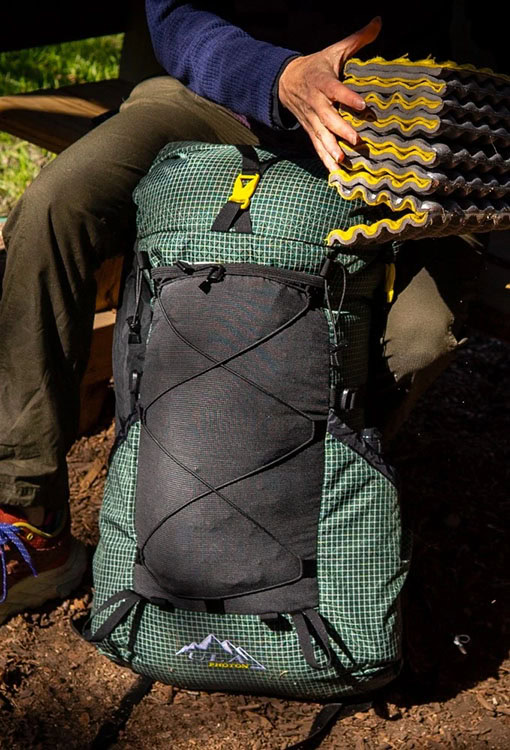
A FRAMELESS 35L ULA PHOTON
Framed Vs. Frameless Packs: What’s the Difference?
Debating a framed versus frameless pack? Choosing the right backpack can make all the difference when it comes to backpacking. With the variety of packs on the market, educating yourself on the differences between the two most prominent pack styles— framed and frameless— is a huge step toward picking the correct pack for your next outing.
FRAMED PACKS
Framed backpacks have an internal frame that provides support and structure. Typically made of lightweight materials such as aluminum or Delrin, the frame distributes weight evenly across the back and hips. Framed backpacks are preferred for heavier loads or longer trips, as they offer more support and stability than their frameless counterpart.
Our framed pack line-up includes the Catalyst, Circuit, Ohm, and Camino. The recommended total weight for these packs ranges from 30 – 40 lbs. We’ve included a chart below to give you a better visual.
Advantages of Framed Packs
Support and Stability: The internal frame in a framed pack provides better support and stability, which can be especially important for heavier loads. The frame helps distribute the pack’s weight across the back and hips, reducing strain on the shoulders and spine. The extra frame support is essential when going to places that require heavier water carries, a bear canister, or extended food carries. Having a pack capable of comfortably carrying heavier loadouts and more gear is beneficial for most backpackers who do not have their gear completely dialed in. Framed packs also provide the extra capacity for luxury items like camera equipment, camp chairs, or assisting a partner by carrying some of their gear.
More Forgiving: Given the extra frame and padding of framed packs, they’re typically more forgiving when packing your items. With extra room and a buffer between you and any pokey stuff, you don’t have to have the perfect packing system.
Better Weight Distribution: The internal frame in a framed pack helps distribute weight more evenly, reducing fatigue and increasing comfort during long hikes. Along with the frame stay system, our framed packs come with load lifters – which help keep the pack closer to your back and transfer the weight to your hips.
Disadvantages of Framed Packs
Heavier: The internal frame in a framed pack adds weight, making it heavier than a frameless pack, which can be a disadvantage for shorter trips, lighter loads, or where weight is a concern.
Less Flexible: The internal frame in a framed pack makes it less flexible and can be harder to maneuver on the trail, which can be a disadvantage for more technical terrain or scrambling.
Harder to Store: Putting everything in your tent with you at the end of a long day makes getting out of camp easier. A framed pack is less moldable than a frameless pack and, depending on the tent you have, will take up too much room or only partially fit under your vestibule.
Frameless Packs
Frameless backpacks are designed without an internal frame, making them lighter and more flexible than framed packs. Frameless packs are usually preferred for shorter trips, lighter loads, or when weight is a concern. They are a popular choice for ultralight backpackers who want to minimize weight and maximize flexibility on the trail.
Our current line-up offers the CDT and Photon for frameless backpack options. These have a 25 lbs. or less recommended total weight. The Dragonfly is also frameless, though we don’t recommend it for long-distance hiking.
Advantages of Frameless Packs
Lightweight: Frameless backpacks are typically lighter than framed packs due to the absence of an internal frame and load lifters, which can be a significant advantage for shorter trips, lighter loads, or where weight is a concern.
Flexible: The absence of an internal frame in a frameless pack makes the pack more flexible and easier to maneuver on the trail, which can be an advantage in technical terrain or when scrambling. And, as mentioned, it makes storing the pack in camp, town, or at home much easier.
Disadvantages of Frameless Packs
Less Support and Stability: The absence of an internal frame in a frameless pack can make it less supportive and stable than a framed pack, which can be a disadvantage for heavier loads or longer trips, as the weight of the pack may be distributed unevenly across the back and hips.
Limited Load Capacity: Frameless backpacks are designed for lighter loads, which can limit the amount of gear you can carry. You might find the pack incredibly uncomfortable if you don’t have everything dialed in.
Harder to Pack: Given the size and reduced padding/protection between your back and your gear, it’s crucial to know how to properly pack your frameless pack to ensure nothing is jutting into your back. But, more on that in another article.
Ultimately, the choice between a framed and frameless backpack depends on the specific needs and preferences of the individual user. A framed pack may be more suitable for longer trips or heavier loads. A frameless backpack may be more comfortable and convenient for shorter trips or lighter loads.

FRAMED PACKS DISTRIBUTE WEIGHT FOR INCREASED COMFORT
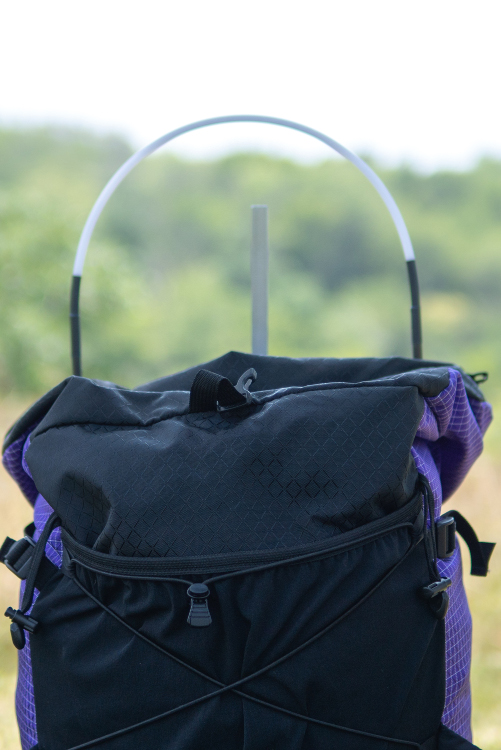
THE SUSPENSION HOOP & SINGLE STAY IN ULA CIRCUIT PACK
Things to Consider
Now that we understand the differences between framed and frameless packs, let’s explore the more nuanced considerations before purchasing your next pack.
Base weight vs Total Weight
Understanding the difference between Base Weight and Total Weight is essential, as it will significantly improve your comfort and user experience.
Base Weight refers to all your gear (tent, backpack, sleeping pad, etc.) MINUS your consumables. For convenience, we’ll refer to consumables as food and water, but note that it widely refers to items that will inevitably reduce in quantity over time and can be as diverse as contact solution, toilet paper, fuel, etc.
Total Pack Weight refers to all your gear PLUS your consumables. This distinction is vital because hikers often get infatuated with their base weight instead of their total weight when deciding on a pack and don’t consider their trip needs.
Why do we recommend using Total Weight instead of Base Weight when considering a pack?
Let’s look at two different hypothetical hikers. One hiker is on the Appalachian Trail (AT), where town stops are more frequent and reliable water sources are more abundant. The other is a Pacific Crest Trail (PCT) hiker in a section where food carries are longer, and water resources are scarce.
Both our hikers have a Base Weight of 12 pounds, but let’s see how they differ when discussing the Total Weight. We’ll make a day’s worth of food equal to 2 pounds (they’re hungry), and a liter of water weighs 2.2 pounds.
The AT hiker only needs 2 liters of water between sources, and three days of food, making their total pack weight 22.4 lbs. Again, this is all their gear and all their consumables together.
The PCT hiker needs five days of food and must carry 4 liters of water between sources. Even though their base weight is the same, the PCT hiker’s total pack weight is 30.8 lbs!
This example demonstrates that although all base weights “may be created equal,” all total pack weights are not. With nearly an eight-pound difference, the AT hiker could comfortably wear a frameless pack while the PCT hiker is carrying a total pack weight more suitable for a framed pack.
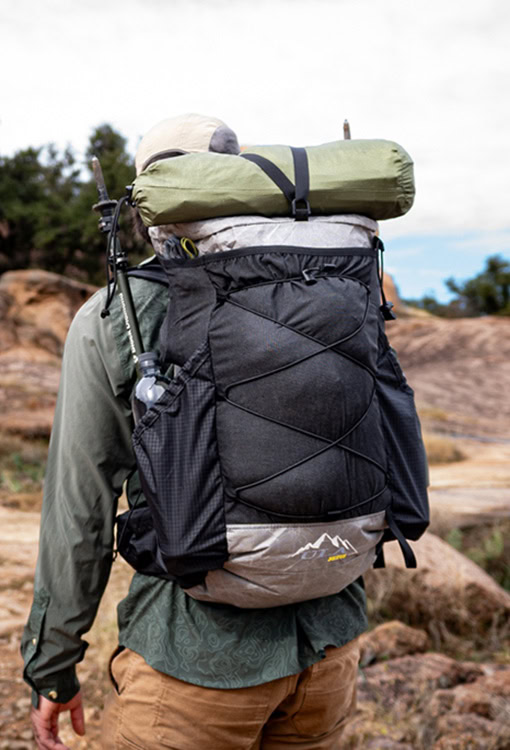
THE NEXUS OFFERS 40L OF FRAMELESS FUNCTIONALITY
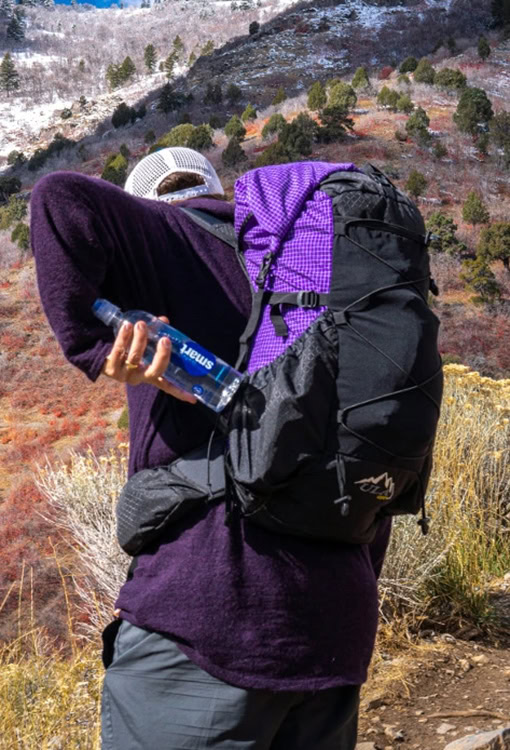
A FRAMELESS PACK OFFERS MORE MOBILITY
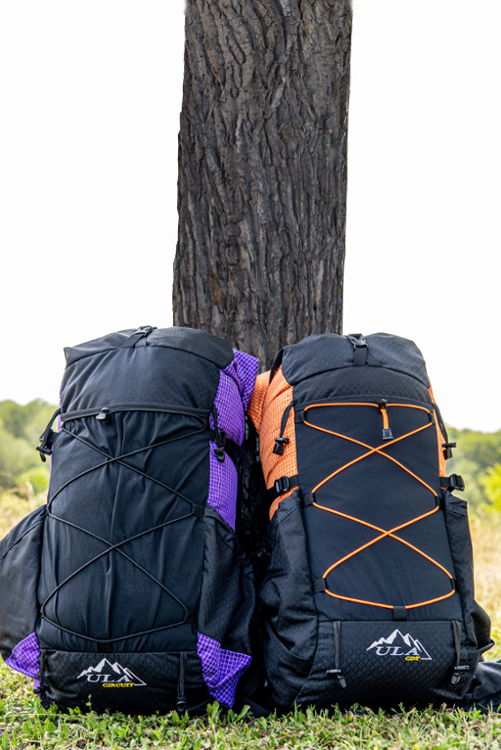
FRAMED VS. FRAMELESS, WHICH ONE IS RIGHT FOR YOU?
Where are you hiking?
Do you typically hike in areas requiring you to carry your own food or water, like a big loop trail? Do you mostly do winter hiking, where your gear is heavier to accommodate lower temperatures? Do you mostly hike in temperate areas that require less gear, food, or water?
Again, it all comes down to total weight, but you should also consider these questions when looking at backpacks.
Getting one-track-minded is easy when planning an extended outing like a section hike or thru-hike. But we encourage you to think critically about the areas you will most frequent after your expedition and the range of trips a single pack could handle.
Diminishing Returns
It’s easy to obsess over grams when looking critically at gear, but when does forfeiting ounces become a burden?
Too often, people quit thru-hikes because they went straight for the UL gear before developing the skillset and experience needed to perform with it. When it comes to your kit, every item you omit is a skill set you need to acquire. Whether it be a technique, comfort with discomfort, or understanding basics like layering systems, it’s always a trade-off when venturing into a side-of-center approach to backpacking and the backcountry.
Be honest with yourself when looking at your loadout. Always prioritize comfort and safety over the latest trend in the community or the desire to emulate your favorite “big-mile crusher” before you’re ready to. There have been plenty of trips where our total pack weight fit into the frameless territory, and we could have used a CDT, but we opted for the extra comfort of a framed pack, like the Ohm, instead.
Conclusion
The choice is yours, and at the end of the day, it’s not really what’s on your back that gets you to the end of the journey but what’s between your ears. Undoubtedly, the right gear significantly impacts your comfort and overall success. But, then again, Grandma Gatewood hiked the Appalachian Trail in Keds and used a shower curtain as a shelter. Her mindset unequivocally took her the distance rather than the gear she carried. Gear is cool, but the experience is cooler.


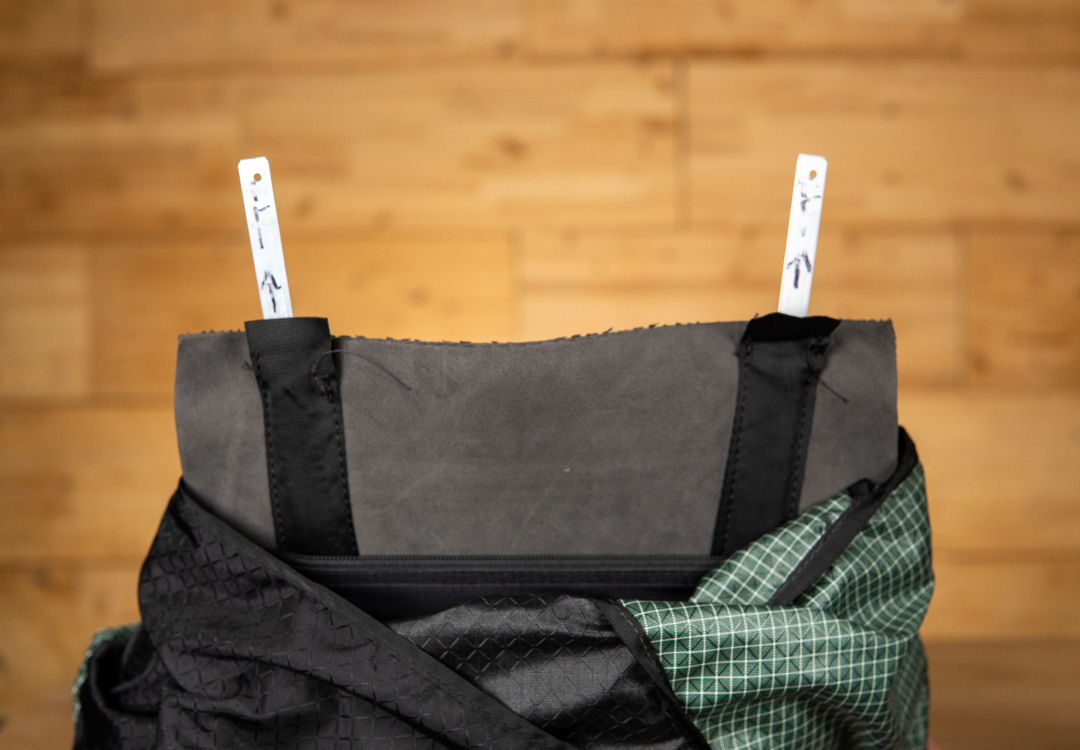
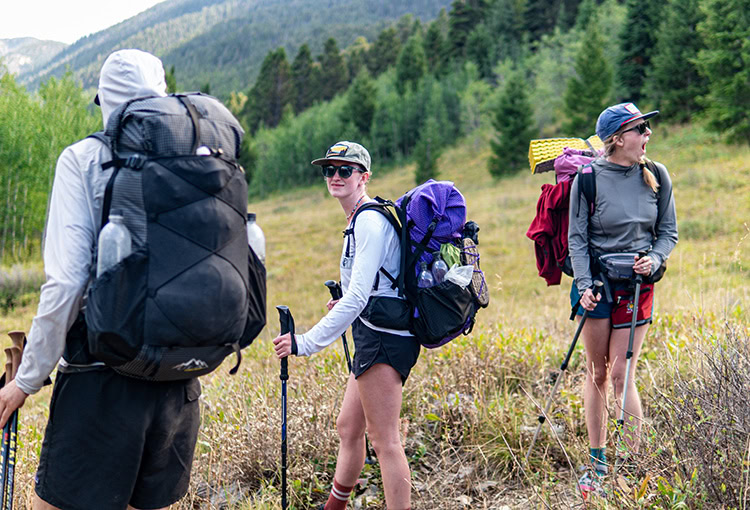
I carry a ULA Catalyst XPAC and will never even consider ANY frame less pack of ANY brand for ANY reason. And that includes day hikes, weekenders, week long hikes or 2000+ mile thru hikes ANYWHERE.
hyoh
Can we stop saying toilet paper weight will be lessened as the trip progresses? Time for EVERYONE EVERYWHERE to pack out their TP! It doesn’t biodegrade quickly, it can leave toxins as it degrades, and there are increasing numbers of people in the backcountry. Pack that stuff in AND pack it out.
Agree countless times ive seen discarded tp which is really bad for environment and people. Its commonplace. Easy to pack out in trash bag carried for discarded food.
Unless you’re carrying your used TP the entire trip and not throwing it away/flushing it in town, then I would consider it a consumable, as it does overtime, reduce its quantity. Totally agree with the packing it out statement and in no way did I mean infer that you should be burying your T.P. in the article, if this is how it came across that was not my intention. Thanks for taking the time to comment! – Garrett/Author